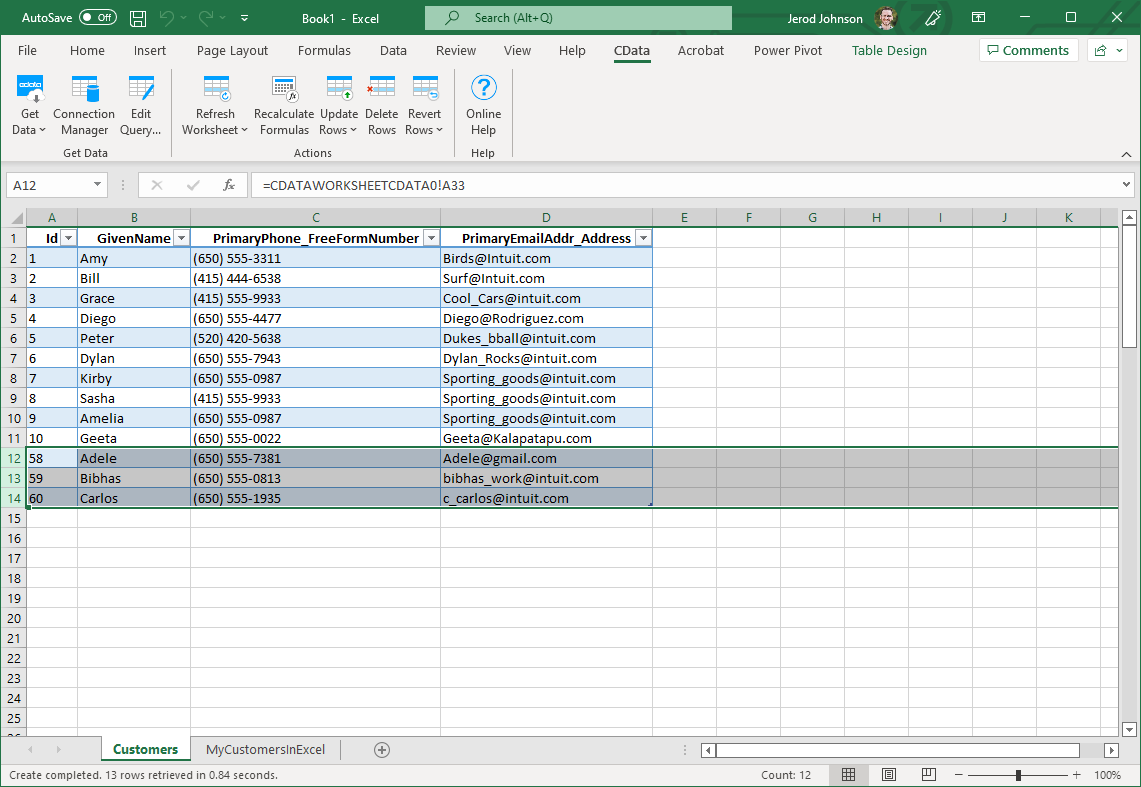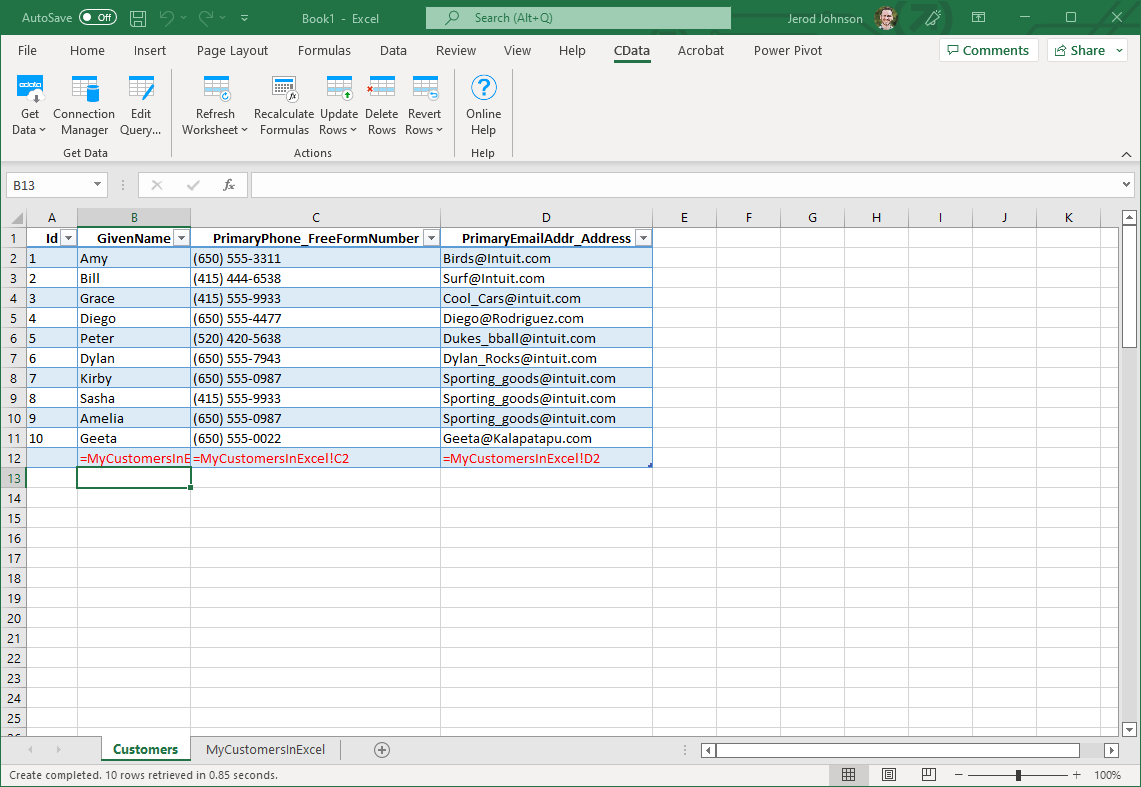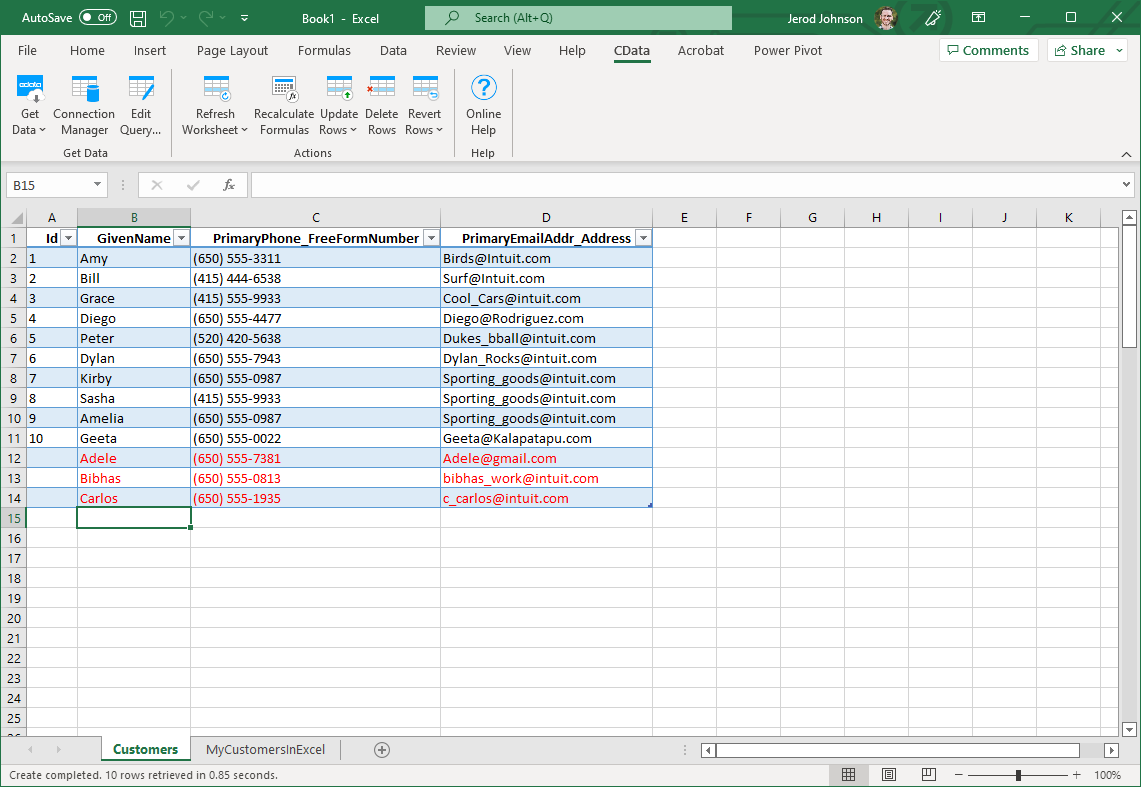Discover how a bimodal integration strategy can address the major data management challenges facing your organization today.
Get the Report →Transfer Data from Excel to DB2
This article explains how to transfer data from Excel to DB2 using the Excel Add-In for DB2.
The CData Excel Add-In for DB2 enables you to edit and save DB2 data directly from Excel. This article explains how to transfer data from Excel to DB2. This technique is useful if you want to work on DB2 data in Excel and update changes, or if you have a whole spreadsheet you want to import into DB2. In this example, you will use the Orders table; however, the same process will work for any table that can be retrieved by the CData Excel Add-In.
Establish a Connection
If you have not already done so, create a new DB2 connection by clicking From DB2 on the ribbon.
Set the following properties to connect to DB2:
- Server: Set this to the name of the server running DB2.
- Port: Set this to the port the DB2 server is listening on.
- Database: Set this to the name of the DB2 database.
- User: Set this to the username of a user allowed to access the database.
- Password: Set this to the password of a user allowed to access the database.
You will also need to install the corresponding DB2 driver:
- Windows: Install the IBM Data Server Provider for .NET.
On Windows, installing the IBM Data Server Provider is sufficient, as the installation registers it in the machine.config.
- Java: Install the IBM Data Server Driver for JDBC.
In the Java version, place the IBM Data Server Driver JAR in the www\WEB-INF\lib\ folder for this application.
Retrieve Data from DB2
To insert data into DB2, you will first need to retrieve data from the DB2 table you want to add to. This links the Excel spreadsheet to the DB2 table selected: After you retrieve data, any changes you make to the data are highlighted in red.
- Click the From DB2 button on the CData ribbon. The Data Selection wizard is displayed.
- In the Table or View menu, select the Orders table.
- In the Maximum Rows menu, select the number of rows you want to retrieve. If you want to insert rows, you need to retrieve only one row. The Query box will then display the SQL query that corresponds to your request.
- In the Sheet Name box, enter the name for the sheet that will be populated. By default the add-in will create a new sheet with the name of the table.
Insert Rows to DB2
After retrieving data, you can add data from an existing spreadsheet in Excel.
- In a cell after the last row, enter a formula referencing the corresponding cell from the other spreadsheet; for example, =MyOrdersSheetInExcel!A1.
![A local copy of a table. One row will be inserted. (QuickBooks is shown.)]()
- After using a formula to reference the cells you want to add to DB2, select the cells that you are inserting data into and drag the formula down as far as needed. The referenced values you want to add will be displayed on
the Orders sheet.
![The range of changes to update. (QuickBooks is shown.)]()
- Highlight the rows you want to insert and click the Update Rows button.
As each row is inserted, the Id value will appear in the Id column and the row's text will change to black, indicating that the record has been inserted.









